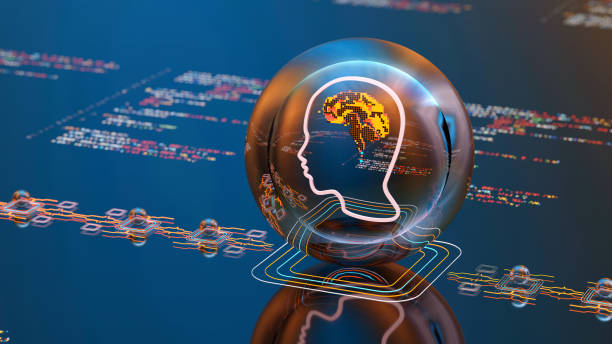What is an AI Robot and How Does It Work?
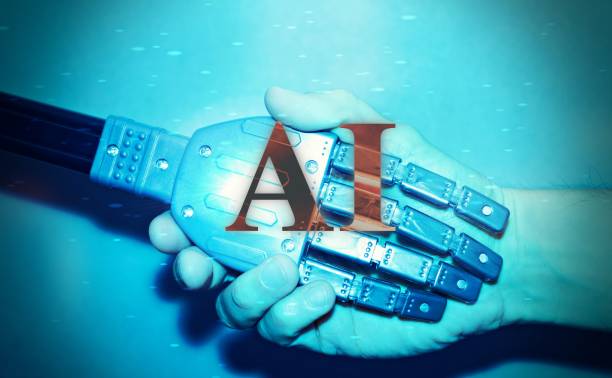
An AI robot, also known as an #intelligent_robot or #intelligent_agent, is a combination of robotic hardware and artificial intelligence software.
These robots are capable of performing tasks that typically require human intelligence, such as learning, problem-solving, decision-making, and understanding natural language.
The operation of an AI robot is based on receiving information from the environment via sensors, processing this information using AI algorithms, and performing appropriate actions based on this processing.
In other words, an #AI_robot, using machine learning and other AI techniques, is capable of recognizing patterns, learning from its experiences, and improving its performance.
These robots are used in various industries, including manufacturing, healthcare, customer services, and even entertainment.
The architecture of an AI robot typically includes: sensors for data collection, a processor for data analysis and execution of AI algorithms, and actuators for physical actions.
The AI software used in these robots can include deep learning algorithms, neural networks, and natural language processing.
To better understand the operation of an AI robot, consider this example: an intelligent robot in a factory can use cameras and sensors to inspect product quality and automatically stop the production line if a defect is detected.
Are you worried about losing customers because you don’t have a professional e-commerce website?
With e-commerce website design by Rasaweb, forget these worries!
✅ Significant increase in sales and visitor-to-customer conversion rate
✅ Professional and user-friendly design that builds customer trust
⚡ Get free consultation from Rasaweb
Diverse Applications of AI Robots in Various Industries
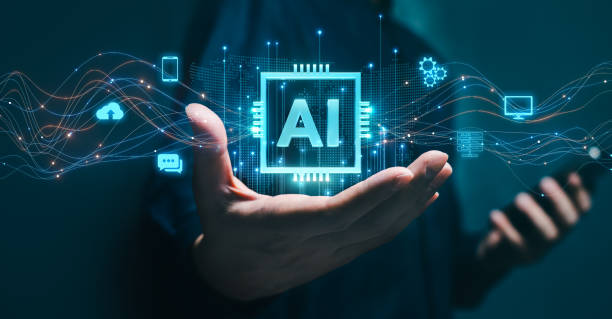
AI robots have extensive applications in various industries.
In manufacturing, these robots are used for production line automation, quality control, and material handling.
In healthcare, intelligent robots can be used in precise surgeries, patient care, and rehabilitation.
In customer services, AI-powered chatbots can answer customer questions and resolve their issues.
In the logistics industry, warehouse robots and delivery drones can help improve efficiency and reduce costs.
Specifically, the use of AI robots in agriculture is also increasing.
These robots can use sensors and AI algorithms to monitor soil, water, and plant conditions, and automatically perform irrigation, fertilization, and pest control.
This leads to increased productivity and reduced resource consumption.
Furthermore, intelligent robots are also used in mining.
These robots can assist in mineral exploration, extraction, and transportation in hazardous and difficult conditions.
Advantages and Disadvantages of Using AI Robots: A Detailed Review

The use of AI robots has many advantages.
These advantages include increased productivity, reduced costs, improved product and service quality, and enhanced safety.
However, the use of intelligent robots also has disadvantages.
These disadvantages include the loss of human jobs, increased reliance on technology, and ethical issues related to privacy and security.
For example, widespread automation in manufacturing can lead to worker unemployment.
On the other hand, AI robots can perform dangerous and repetitive tasks, preventing harm to humans.
One of the main challenges in using AI robots is the issue of cybersecurity.
If hacked, intelligent robots can be misused and cause irreparable damage.
Therefore, protecting intelligent robots from cyberattacks is of paramount importance.
Furthermore, ethical issues related to the decision-making of intelligent robots must also be considered.
For example, if a self-driving robot is in an emergency situation, how should it decide? Should it save its occupants’ lives or prevent harm to others? These questions require careful consideration and the formulation of appropriate laws and regulations.
| Advantages | Disadvantages |
|---|---|
| Increased Productivity | Job Loss |
| Reduced Costs | Increased Reliance on Technology |
| Improved Quality | Ethical and Security Issues |
The Future of AI Robots: What to Expect
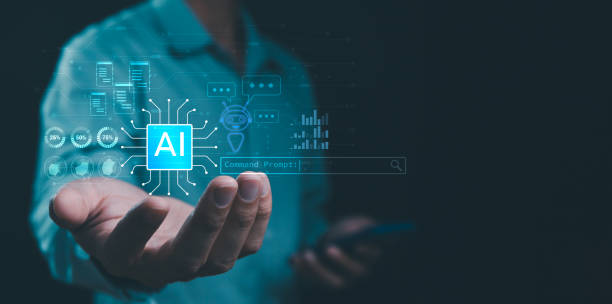
The future of AI robots is very bright and full of opportunities.
With rapid advancements in AI and robotics, intelligent robots are expected to play a much more significant role in our lives in the future.
These robots can help us in homes, workplaces, and even in space.
For example, domestic robots can assist with daily tasks such as cleaning, cooking, and caring for the elderly.
Space robots can explore planets and asteroids and send valuable information back to Earth.
However, to realize this vision, existing challenges must be addressed.
These challenges include developing more advanced AI algorithms, improving the sensing and movement capabilities of robots, and resolving ethical and security issues.
Furthermore, training specialized personnel in robotics and artificial intelligence is also of great importance.
Overall, the future of AI robots depends on the level of investment in research and development, collaboration between industry and academia, and the formulation of appropriate policies.
Does your current corporate website present a worthy image of your brand and attract new customers?
If not, transform this challenge into an opportunity with Rasaweb’s professional corporate website design services.
✅ Significantly improves your brand’s credibility and image.
✅ Paves the way for attracting leads and new customers for you.
⚡ Contact Rasaweb now for free and specialized consultation!
Types of AI Robots from the Perspective of Application and Performance

AI robots can be categorized from various perspectives.
In terms of application, they can be divided into industrial robots, medical robots, domestic robots, military robots, and space robots.
In terms of performance, they can be divided into autonomous robots, remote-controlled robots, collaborative robots, and humanoid robots.
Industrial robots are typically used for repetitive and heavy tasks in production lines.
Medical robots are used for precise surgeries and patient care.
Domestic robots are used for daily tasks at home.
Military robots are used for dangerous and difficult tasks on the battlefield.
Space robots are used for exploring planets and asteroids.
Autonomous robots are capable of moving in various environments and performing their tasks without human intervention.
Remote-controlled robots are controlled by humans.
Collaborative robots work alongside humans and assist them in performing tasks.
Humanoid robots resemble humans and are capable of imitating human movements and behaviors.
Choosing the appropriate type of AI robot depends on the application and environmental conditions.
How an AI Robot is Designed and Built

Designing and building an AI robot is a complex, multi-stage process.
This process includes the following stages: problem definition and goal setting, hardware design, software design, hardware and software integration, testing and evaluation, and improvement and optimization.
In the problem definition stage, it must be determined what task the AI robot is being designed for and what goals need to be achieved.
In the hardware design stage, the physical components of the robot, such as sensors, actuators, and the processor, must be selected.
In the software design stage, the AI algorithms required to control the robot and perform tasks must be defined.
In the integration stage, hardware and software are combined, and the robot is prepared for testing.
In the testing and evaluation stage, the robot’s performance is examined under various conditions, and its weaknesses are identified.
In the improvement and optimization stage, the robot is enhanced based on the test results.
To design and build a successful AI robot, knowledge and expertise in various fields such as robotics, artificial intelligence, electronics, and programming are required.
Additionally, the use of simulation tools and software can help reduce costs and accelerate the design process.
Overall, designing and building an AI robot is an exciting and innovative challenge.
Examining the Ethical and Legal Challenges of AI Robots
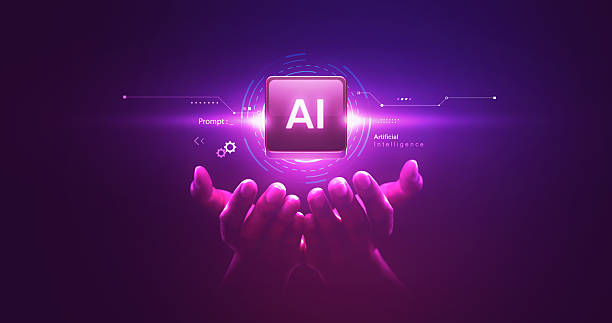
The development and use of AI robots are accompanied by numerous ethical and legal challenges.
These challenges include issues related to privacy, security, accountability, and discrimination.
Privacy means that intelligent robots should not collect and use individuals’ personal information without their permission.
Security means that intelligent robots should not be designed in a way that poses a danger to individuals or society.
Accountability means: if an intelligent robot causes damage, who will be responsible for compensating for it? Discrimination means that AI robots should not make discriminatory decisions based on individuals’ gender, race, or other personal characteristics.
Artificial intelligence.
To address these challenges, appropriate laws and regulations need to be formulated.
These laws must protect individuals’ rights against intelligent robots and prevent the misuse of this technology.
Furthermore, educating designers and manufacturers of intelligent robots about ethics and accountability is also of great importance.
Overall, addressing the ethical and legal challenges of AI robots is essential for the sustainable and responsible development of this technology.
| Challenge | Description |
|---|---|
| Privacy | Collection and use of personal information without permission |
| Security | Being dangerous to individuals or society |
| Accountability | Responsibility for damages caused by robot performance |
| Discrimination | Discriminatory decisions based on personal characteristics |
The Role of AI Robots in Humans’ Daily Lives

AI robots are increasingly playing a role in humans’ daily lives.
From voice assistants like Siri and Alexa to self-driving cars and domestic robots, this technology is changing how we live, work, and interact with the world around us.
Voice assistants can help us with various tasks such as setting reminders, playing music, and answering questions.
Self-driving cars can help us drive more safely and comfortably.
Domestic robots can help us with daily tasks such as cleaning and caring for the elderly.
In the future, intelligent robots are expected to play a much more significant role in our lives, helping us solve problems and improve our quality of life.
One of the areas where AI robots can have a significant impact is education.
Educational robots can help students learn complex concepts and provide a more personalized learning experience.
Furthermore, intelligent robots can help people with disabilities live independently and participate in various activities.
Overall, the potential of AI robots to improve human lives is immense.
Is your company’s website as professional and trustworthy as it should be? With specialized corporate website design by Rasaweb, create an online presence that represents your credibility and attracts more customers.
✅ Build a powerful and professional image for your brand
✅ Convert visitors into real customers
⚡ Get a free consultation now!
Case Study: Successes of AI Robots in the Real World
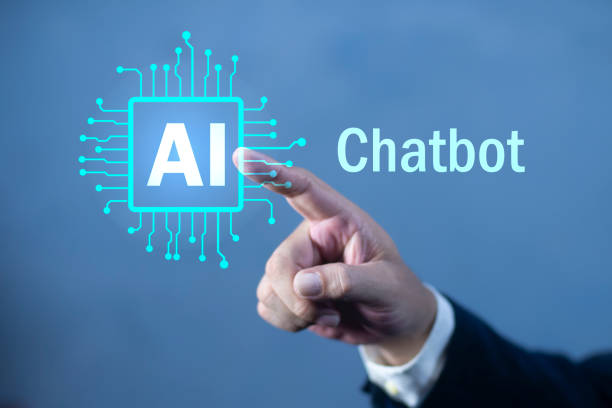
In the real world, there are numerous examples of AI robot successes.
One such example is the use of surgical robots in hospitals.
These robots can perform more precise surgeries with minimal invasiveness, reducing patient recovery time.
Another example is the use of warehouse robots in distribution centers.
These robots can automatically move goods, increasing the speed and accuracy of warehousing operations.
AI Robot
Also, the use of inspection robots in the oil and gas industries has been very successful.
These robots can inspect pipelines and equipment in hazardous and difficult conditions, preventing accidents.
Furthermore, AI-powered chatbots in customer service have been able to effectively answer customer questions and resolve their issues.
These successes demonstrate that AI robots can help improve efficiency, reduce costs, and enhance safety across various industries.
How AI Robots Learn and Are Trained
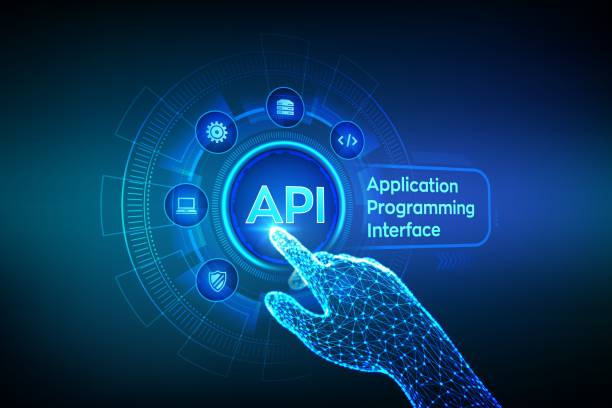
AI robots learn and are trained through various methods.
One of these methods is machine learning.
In machine learning, an AI robot recognizes patterns and improves its performance using training data.
Another method is reinforcement learning.
In reinforcement learning, an AI robot learns how to make the best decisions in a specific environment through trial and error.
The third method is transfer learning.
In transfer learning, an AI robot transfers knowledge it has acquired in one domain to another domain.
To train an AI robot, quality training data and appropriate learning algorithms are required.
Furthermore, continuous evaluation of the AI robot’s performance and providing feedback to it are also of great importance.
Overall, the learning and training of AI robots is a continuous and iterative process that requires effort and expertise.
AI robots are currently considered a key element in the development of new technologies.
Frequently Asked Questions
| Question | Answer |
|---|---|
| What is an AI robot? | An Artificial Intelligence Robot (AI Robot) is a machine capable of understanding its environment, reasoning, learning, and making decisions to perform tasks autonomously. |
| What is the difference between ordinary robots and AI robots? | Ordinary robots perform repetitive tasks based on prior programming, whereas AI robots can learn from experience, interact dynamically with their environment, and even behave in ways that resemble human intelligence. |
| What are the main applications of AI robots? | They are used in industries (manufacturing, assembly), medicine (surgery, diagnosis), services (customer support, domestic), exploration (space, underwater), and many other fields. |
| What technologies are used in building AI robots? | Machine Learning, Computer Vision, Natural Language Processing, Deep Learning, and Robotics are among the key technologies. |
| Can AI robots have emotions? | Currently, robots do not have emotions in the human sense. They can identify and react to emotions, but they do not experience emotions themselves. |
| What are the main challenges in developing AI robots? | Safety, reliability, ethics, autonomy, adaptability to complex environments, and natural human interaction are among the important challenges. |
| How are AI robots trained? | They are usually trained using large volumes of data, machine learning algorithms, and deep learning to identify patterns and make decisions. |
| Examples of AI robots in daily life? | Smart robotic vacuum cleaners, customer support chatbots, self-driving cars, and surgical robots in hospitals. |
| Are AI robots a threat to human jobs? | Some repetitive jobs may become automated, but at the same time, robots can increase productivity and create new jobs in the development, maintenance, and supervision of these systems. |
| How is the future of AI robots predicted? | They are expected to become smarter, more autonomous, and capable of performing more complex tasks, engaging in closer interaction with humans in various environments. |
And other advertising agency services by Rasaweb in the field of advertising
- Smart Digital Advertising: An effective tool for campaign management with key page optimization.
- Smart Conversion Rate Optimization: A new service for increasing website traffic through key page optimization.
- Smart Google Ads: Designed for businesses looking to analyze customer behavior through marketing automation.
- Smart Marketing Automation: A specialized service for growing campaign management based on user experience customization.
- Smart UI/UX: A professional solution for digital branding with a focus on key page optimization.
And hundreds of other services in the field of internet advertising, advertising consultation, and organizational solutions
Internet Advertising | Advertising Strategy | Advertorial
Sources
Robotics and AI on Zoomit
AI and Robotics Articles on Digikala Mag
Applications of AI in Industry
Smart Robot News on IRNA
Ready to transform your business in the digital world? Rasaweb Afarin Digital Marketing Agency, specializing in SEO, content marketing, and corporate website design, offers a comprehensive solution for your online success. Contact us today for a free consultation.
📍 Tehran, Mirdamad Street, next to Bank Markazi, Kazerun Jonubi Alley, Ramin Alley, No. 6

